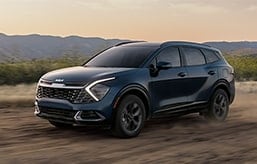- Hyundai will produce its N Vision 74 concept.
- It's not clear when, but the company mentioned it as part of 21 new models that will debut by 2030.
- What will power the concept isn't clear, but hydrogen doesn't feel like the answer.
Hyundai Confirms Production for Its Stunning N Vision 74 Concept
Hyundai is getting to work on a roadgoing version of its N Vision 74 concept
Hiding in a slide for its CEO Investor Day presentations lies confirmation of quite possibly the coolest shape Hyundai has ever put into production. The South Korean automaker will produce the N Vision 74 concept, a wedge-shaped 617-horsepower wing-festooned coupe it showed off two years ago. The concept is technically a hybrid, though not the kind anyone is used to.
Instead of being a conventional hybrid like a Pruis, the T-hybrid of the new Porsche 911 GTS, or a plug-in like the new BMW M5, the N Vision 74 it pairs hydrogen fuel cells with electric motors to deliver its power. Hyundai’s logic is that the pairing offers better cooling than a traditional hybrid, and adding hydrogen to the electrified powertrain means that owners would spend less time charging. That said, the difficulties around hydrogen are obvious, and it would take a Herculean effort from automakers to put more hydrogen cars into production, and it doesn't look as though that's happening anytime soon.
The presentation states the N Vision 74 will be part of a broader plan to roll out 21 new models by 2030, so when the N Vision will actually go into production is anyone’s guess. Originally, it was rumored around 100 would be made, but that tune may have changed. The car’s final powertrain is also up for debate.
Hyundai’s original plan for a hybrid hydrogen powertrain doesn’t strike us as a very sustainable one for buyers given the unreliability of the hydrogen fueling network right now. Outside of California, many potential owners would not have access to a reliable source of hydrogen. It’s possible the company may move to a more traditional hybrid internal combustion engine setup, or use its existing electric architecture to go full EV. If it's light enough, we don't see why the pumped-up version of the Elantra N's powertrain couldn't fit right in or — perhaps even better — the e-supercharged version of the V6 in the Genesis G90. Time will tell, but we're excited just by the way this thing looks.




 by
by  edited by
edited by